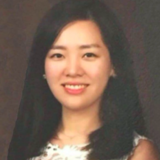Image Modeling with Keras
Learn to conduct image analysis using Keras with Python by constructing, training, and evaluating convolutional neural networks.
Kurs Kostenlos Starten4 Stunden13 Videos45 Übungen36.291 LernendeLeistungsnachweis
Kostenloses Konto erstellen
oder
Durch Klick auf die Schaltfläche akzeptierst du unsere Nutzungsbedingungen, unsere Datenschutzrichtlinie und die Speicherung deiner Daten in den USA.Trainierst du 2 oder mehr?
Versuchen DataCamp for BusinessBeliebt bei Lernenden in Tausenden Unternehmen
Kursbeschreibung
Learn to Use Convolutional Neural Networks in Python
Image model often requires deep learning methods that use data to train neural network algorithms to do various machine learning tasks. Convolutional neural networks (CNNs) are particularly powerful neural networks that you'll use to classify different types of objects for the analysis of images. This four-hour course will teach you how to construct, train, and evaluate CNNs using Keras.Turning images into data and teaching neural networks to classify them is a challenging element of deep learning with extensive applications throughout business and research, from helping an eCommerce site manage inventory more easily to allowing cancer researchers to quickly spot dangerous melanoma.
Discover Keras CNNs
The first chapter of this course covers how images can be seen as data, and how you can use Keras to train a neural network to classify objects found in images.The second chapter will cover convolutions, a fundamental part of CNNs. You’ll learn how they operate on image data and learn how to train and tweak your Keras CNN using test data. Later chapters go into more detail and teach you how to create a deep learning network.
Build Your Own Keras Neural Network
You’ll end the course by learning the different ways that you can track how well a CNN is doing and how you can improve their performance. At this point, you’ll be able to build Keras neural networks, optimize them, and visualize their responses across a range of applications.Trainierst du 2 oder mehr?
Verschaffen Sie Ihrem Team Zugriff auf die vollständige DataCamp-Plattform, einschließlich aller Funktionen.In den folgenden Tracks
Bildbearbeitung mit Python
Gehe zu TrackKeras Grundlagen
Gehe zu Track- 1
Image Processing With Neural Networks
KostenlosConvolutional neural networks use the data that is represented in images to learn. In this chapter, we will probe data in images, and we will learn how to use Keras to train a neural network to classify objects that appear in images.
Introducing convolutional neural networks50 xpImages as data: visualizations100 xpImages as data: changing images100 xpClassifying images50 xpUsing one-hot encoding to represent images100 xpEvaluating a classifier100 xpClassification with Keras50 xpBuild a neural network100 xpCompile a neural network100 xpFitting a neural network model to clothing data100 xpCross-validation for neural network evaluation100 xp - 2
Using Convolutions
Convolutions are the fundamental building blocks of convolutional neural networks. In this chapter, you will be introducted to convolutions and learn how they operate on image data. You will also see how you incorporate convolutions into Keras neural networks.
Convolutions50 xpOne dimensional convolutions100 xpImage convolutions100 xpDefining image convolution kernels100 xpImplementing image convolutions in Keras50 xpConvolutional network for image classification100 xpTraining a CNN to classify clothing types100 xpEvaluating a CNN with test data100 xpTweaking your convolutions50 xpAdd padding to a CNN100 xpAdd strides to a convolutional network100 xpCalculate the size of convolutional layer output50 xp - 3
Going Deeper
Convolutional neural networks gain a lot of power when they are constructed with multiple layers (deep networks). In this chapter, you will learn how to stack multiple convolutional layers into a deep network. You will also learn how to keep track of the number of parameters, as the network grows, and how to control this number.
Going deeper50 xpCreating a deep learning network100 xpTrain a deep CNN to classify clothing images100 xpWhat is special about a deep network?50 xpHow many parameters?50 xpHow many parameters in a CNN?50 xpHow many parameters in a deep CNN?100 xpPooling operations50 xpWrite your own pooling operation100 xpKeras pooling layers100 xpTrain a deep CNN with pooling to classify images100 xp - 4
Understanding and Improving Deep Convolutional Networks
There are many ways to improve training by neural networks. In this chapter, we will focus on our ability to track how well a network is doing, and explore approaches towards improving convolutional neural networks.
Tracking learning50 xpPlot the learning curves100 xpUsing stored weights to predict in a test set100 xpRegularization50 xpAdding dropout to your network100 xpAdd batch normalization to your network100 xpInterpreting the model50 xpExtracting a kernel from a trained network100 xpShape of the weights50 xpVisualizing kernel responses100 xpNext steps50 xp
Trainierst du 2 oder mehr?
Verschaffen Sie Ihrem Team Zugriff auf die vollständige DataCamp-Plattform, einschließlich aller Funktionen.In den folgenden Tracks
Bildbearbeitung mit Python
Gehe zu TrackKeras Grundlagen
Gehe zu TrackMitwirkende



Voraussetzungen
Introduction to Deep Learning with KerasWas sagen andere Lernende?
Melden Sie sich an 15 Millionen Lernende und starten Sie Image Modeling with Keras Heute!
Kostenloses Konto erstellen
oder
Durch Klick auf die Schaltfläche akzeptierst du unsere Nutzungsbedingungen, unsere Datenschutzrichtlinie und die Speicherung deiner Daten in den USA.